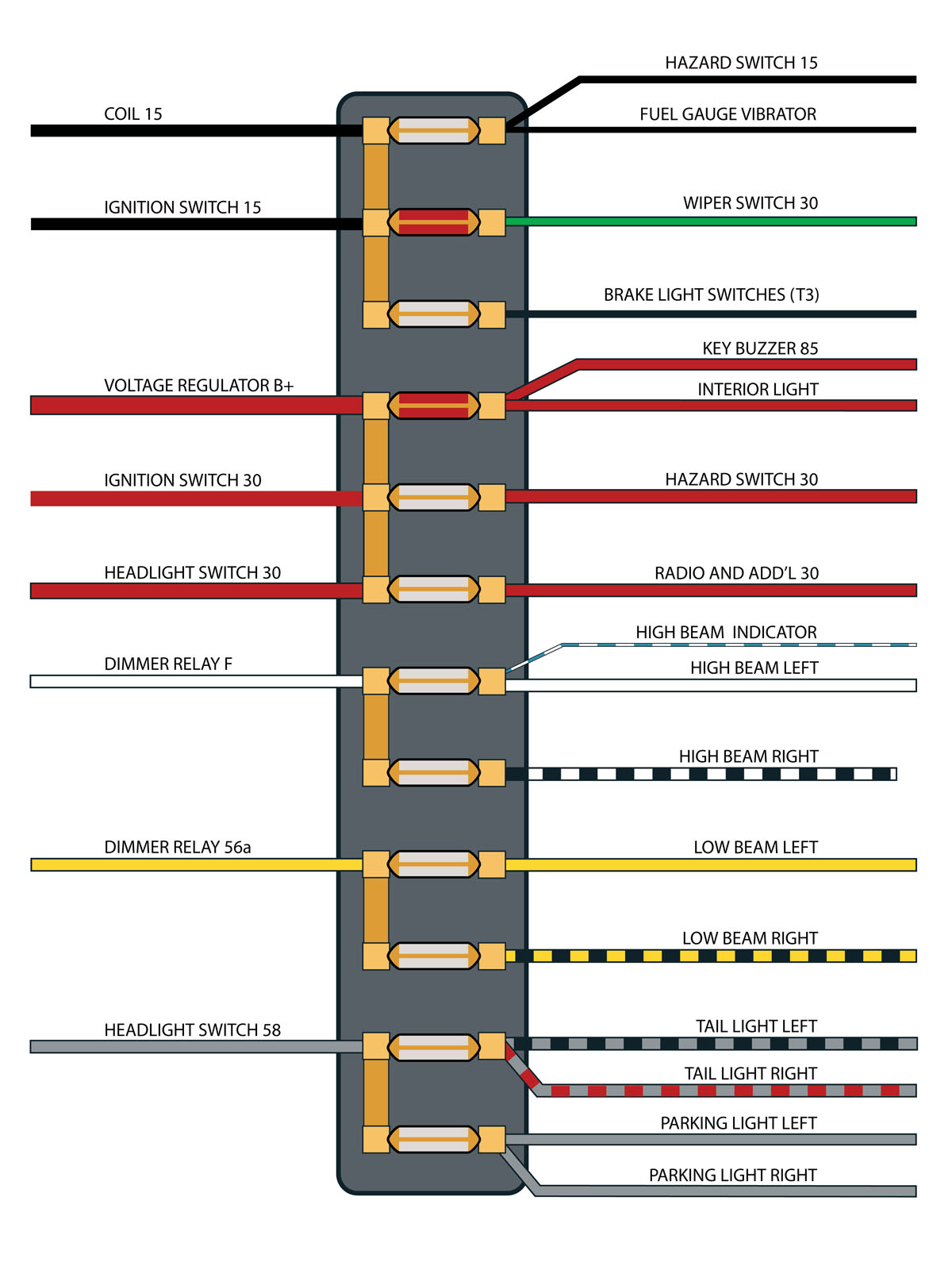The interesting thing here is that there are no fuses in the starter or ignition coil circuits-- though they do depend on continuity through the bus bars on the left side of the fuse block. Guess VW didn't want the cars to stop on the side of the road over a simple loose or blown fuse, though it's now more likely to catch on fire.Red fuses are 16a. White are 8a. Most of them are 8a from the factory.
I have not verified this diagram, but it is posted on the Samba. I have a 71 owners manual. If I find it tonight, I'll post the fuse box diagram.

First test (after confirming engine is able to turn) would be to jump the starter as Trav shows. This will test the starter, battery, and the big power and ground wires. All the small wires related to the ignition switch are bypassed.
The red wires should be live all the time and the black wires become live when the key is turned on. Since the light switch is supplied from a red wire, the headlights and taillights should work even with the key off. Interestingly the brake lights are switched through the ignition switch.
Last edited:
